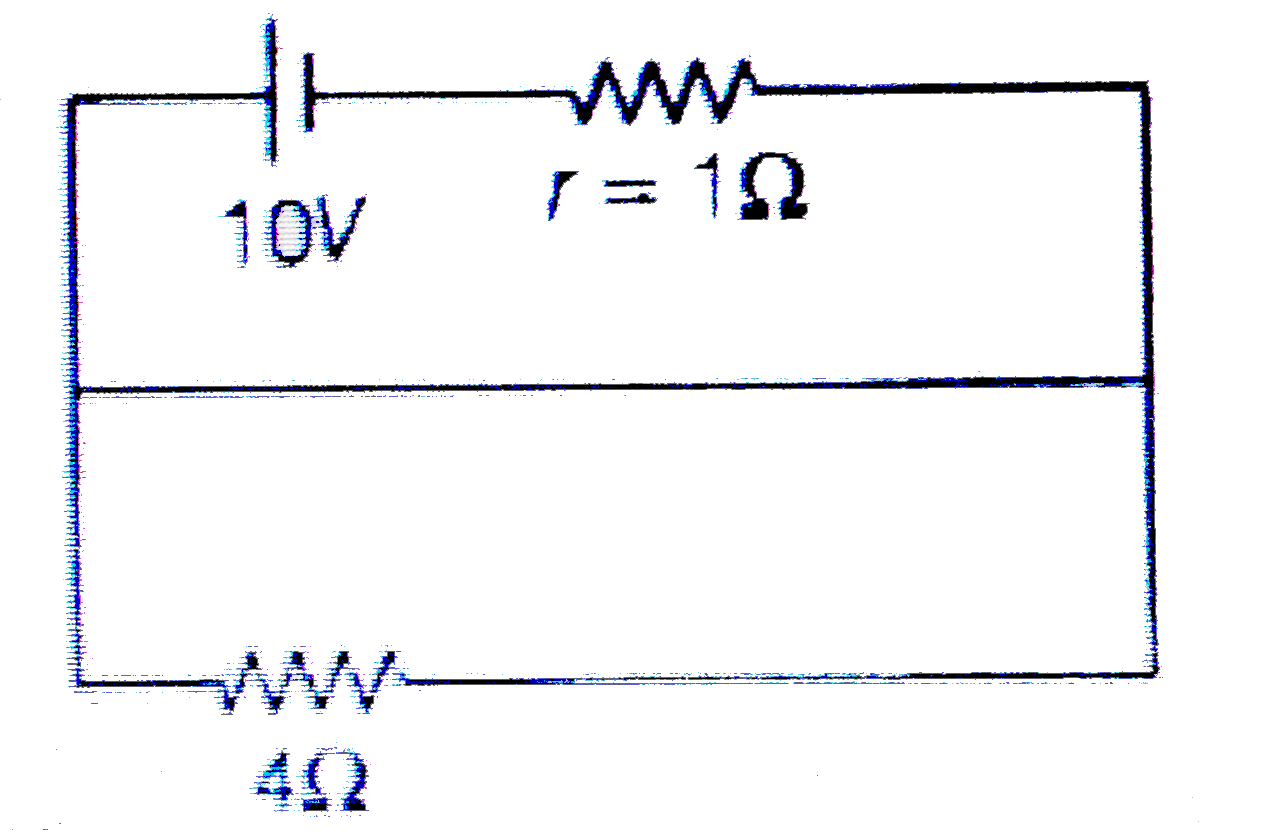Assertion : Potential difference across the terminals of a battery is always less than the emf of the battery.
Reason : During discharging of a battery potential differnce across to terminals of a battery is
V=E−ir
∴V<E
If both Assertion and Reason are true and Reason is the correct explanation of Assertion.
If both Assertion and Reason are true and Reason is not correct explanation of Assertion.
If Assertion is true but Reason is false.
If Assertion is false but Reason is true.
The correct Answer is:D
To solve the question, we need to analyze the assertion and the reason provided:
Step 1: Understanding the Assertion
The assertion states that the potential difference (V) across the terminals of a battery is always less than the electromotive force (emf, E) of the battery. This is a general statement about batteries during discharging.
Step 2: Analyzing the Reason
The reason given is that during the discharging of a battery, the potential difference across the terminals is given by the equation:
V=E−ir
where i is the current flowing through the battery and r is the internal resistance of the battery.
Step 3: Deriving the Relationship
From the equation V=E−ir:
- The term ir represents the voltage drop due to the internal resistance of the battery when current flows through it.
- Since ir is a positive quantity (as both i and r are positive), it follows that:
V<E
This confirms that the potential difference across the terminals is indeed less than the emf when the battery is discharging.
Step 4: Conclusion
Thus, the assertion is true because the potential difference across the terminals of a battery during discharging is always less than the emf of the battery, as derived from the reason provided.
Final Statement
- Assertion: True
- Reason: True
- The assertion is correct, and the reason correctly explains why the assertion holds true.
The assertion states that the potential difference (V) across the terminals of a battery is always less than the electromotive force (emf, E) of the battery. This is a general statement about batteries during discharging.
The reason given is that during the discharging of a battery, the potential difference across the terminals is given by the equation:
V=E−ir
where i is the current flowing through the battery and r is the internal resistance of the battery.
From the equation V=E−ir:
- The term ir represents the voltage drop due to the internal resistance of the battery when current flows through it.
- Since ir is a positive quantity (as both i and r are positive), it follows that:
V<E
This confirms that the potential difference across the terminals is indeed less than the emf when the battery is discharging.
Thus, the assertion is true because the potential difference across the terminals of a battery during discharging is always less than the emf of the battery, as derived from the reason provided.
- Assertion: True
- Reason: True
- The assertion is correct, and the reason correctly explains why the assertion holds true.
Topper's Solved these Questions
- CURRENT ELECTRICITYBook:DC PANDEY ENGLISHChapter:CURRENT ELECTRICITYExercise:Match the columns
Explore 4 Videos
- CURRENT ELECTRICITYBook:DC PANDEY ENGLISHChapter:CURRENT ELECTRICITYExercise:Medical entrances gallery
Explore 97 Videos
- CURRENT ELECTRICITYBook:DC PANDEY ENGLISHChapter:CURRENT ELECTRICITYExercise:Taking it together
Explore 142 Videos
- COMMUNICATION SYSTEMBook:DC PANDEY ENGLISHChapter:COMMUNICATION SYSTEMExercise:Subjective
Explore 11 Videos
- ELECTROMAGNETIC INDUCTIONBook:DC PANDEY ENGLISHChapter:ELECTROMAGNETIC INDUCTIONExercise:Medical entrances gallery
Explore 25 Videos
Similar Questions
Potential difference across the terminal of a non ideal battery is
View SolutionPotential different across the terminals of the battery shown in figure is

View SolutionWhat is the relationship between potential difference across the terminals of a cell and emf of the cell ?
View SolutionCan the potential difference across a battery be greater than its emf?
View SolutionAssertion: Terminal potential difference of a cell is always less than its emf.
Reason: Potential drop on internal resistance of cell increases terminal potential difference.
View SolutionIn the circuit, V is potential differences across the terminal as shwon in figure. Then the value of V is

View SolutionA car battery with a 12V e.m.f. and an internal resistance of 0.04Ω is being charged with a current of 50A.
The potential difference V across the terminals of the battery are:
View SolutionPotential difference across AB , i.e., VA−VB is

View SolutionThe potential difference across the terminals of a battery is 10 V when there is a current of 3 A in the battery from the negative to the positive terminal. When the current is 2A in the reverse direction, the potential difference becomes 15 V. The internal resistance of the battery is
View SolutionThe potential difference across the terminals of a battery is 8.4V when there is a current of 1.50A in the battery from the negative to the positive terminal. When the current is 3.50Air, the reverse direction, the potential difference becomes 9.4V.
(a) What is the internal resistance of the battery?
(b) What is the emf of the battery?
View Solution
